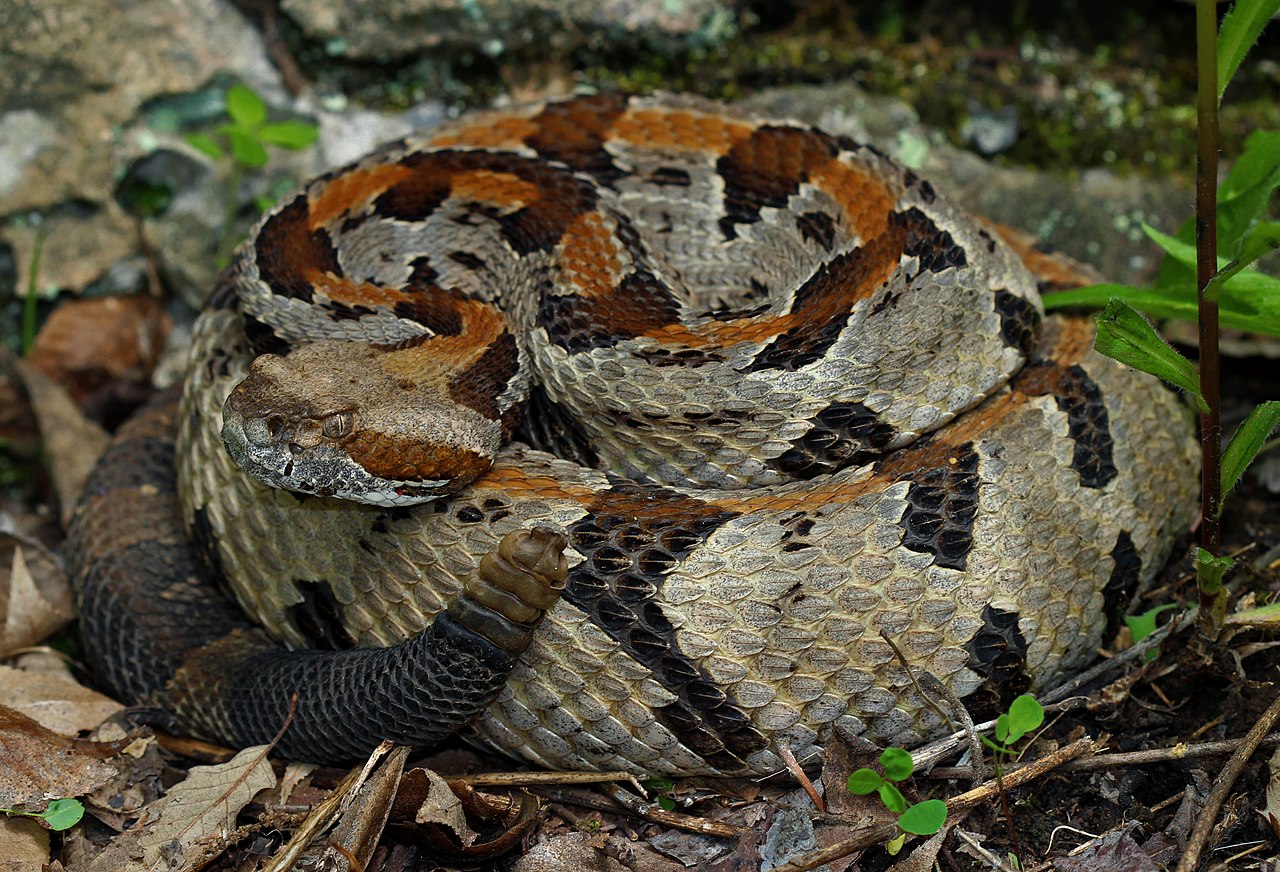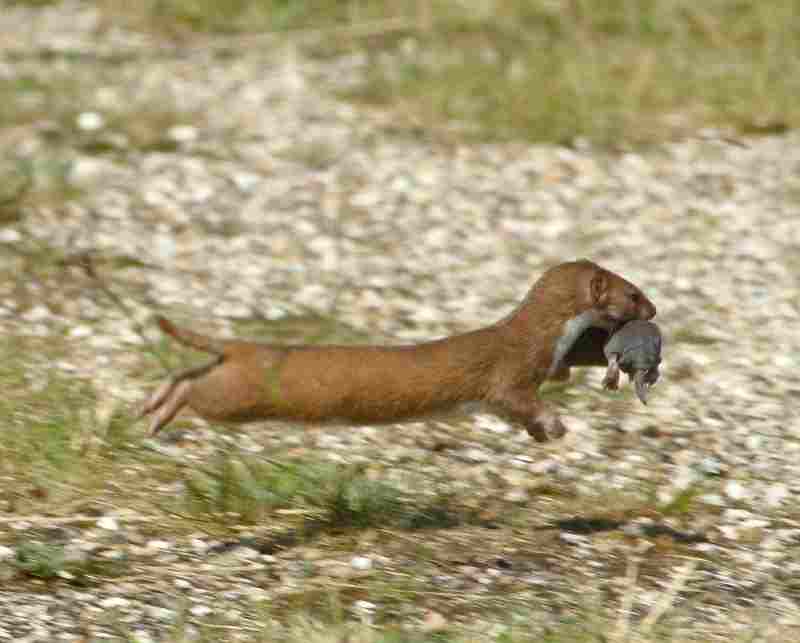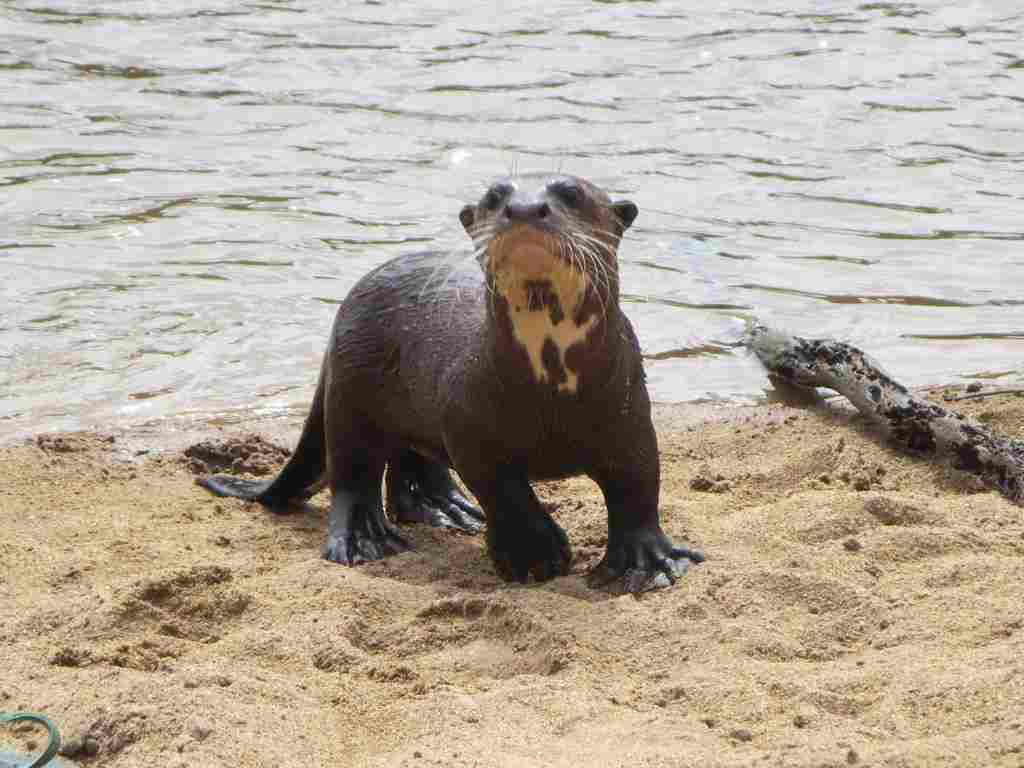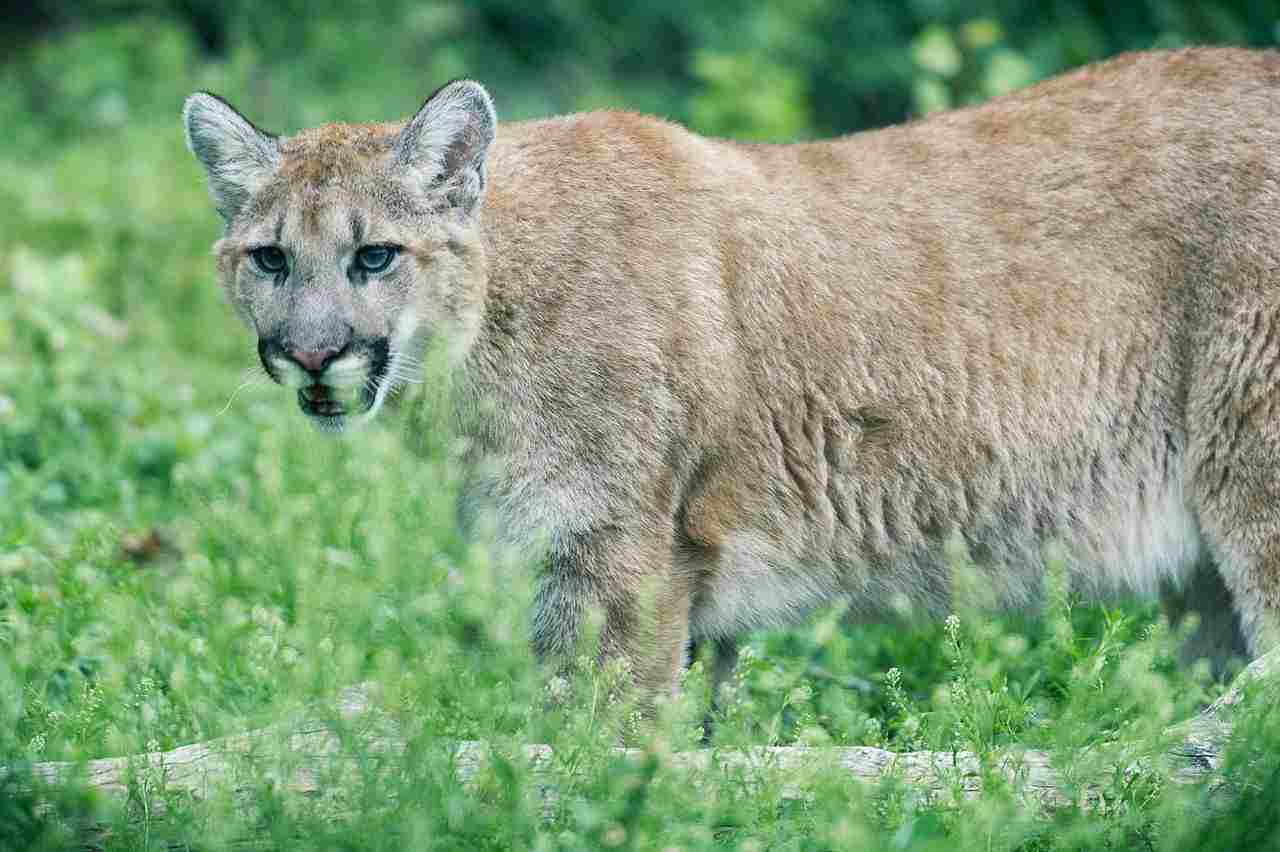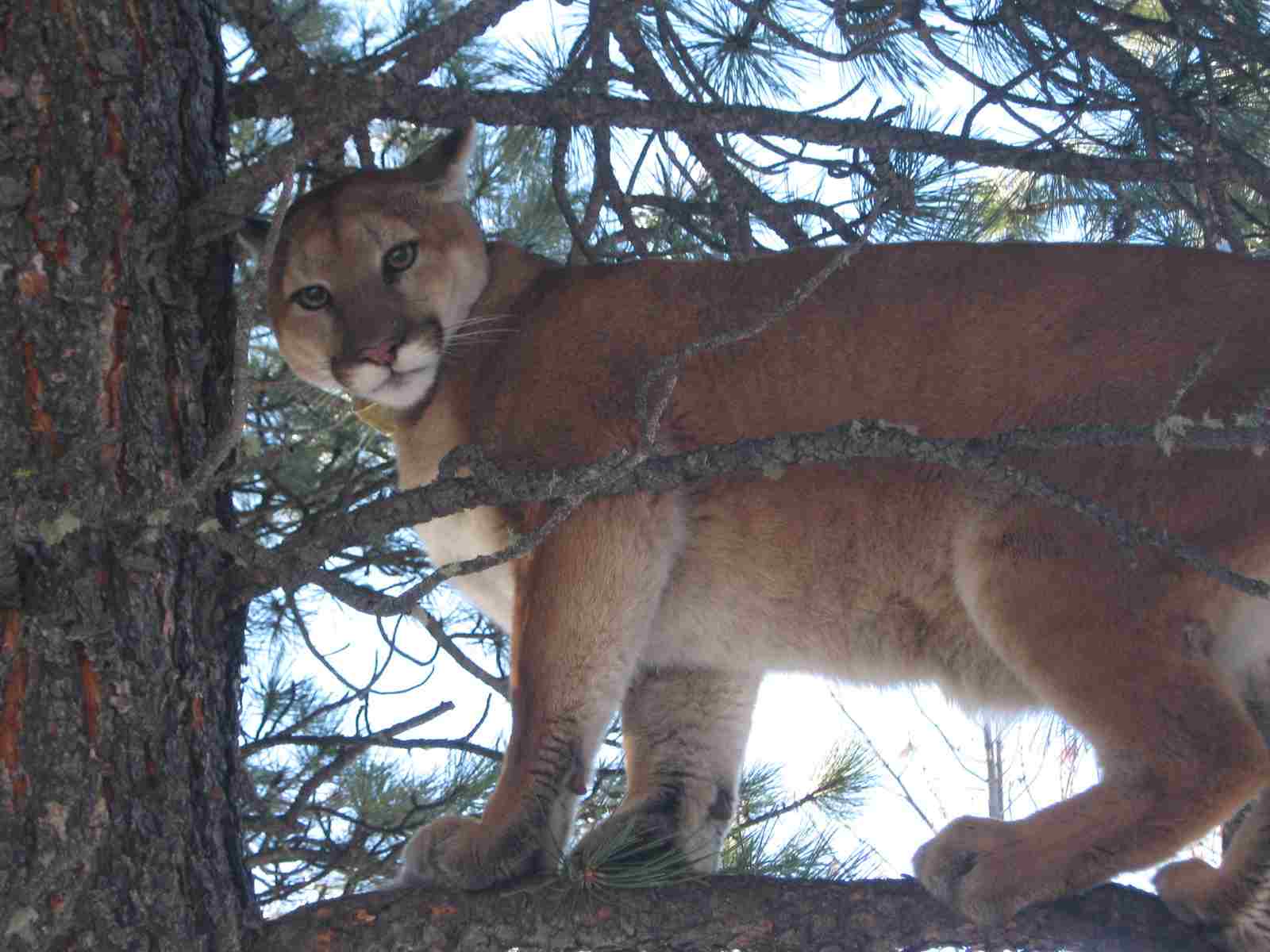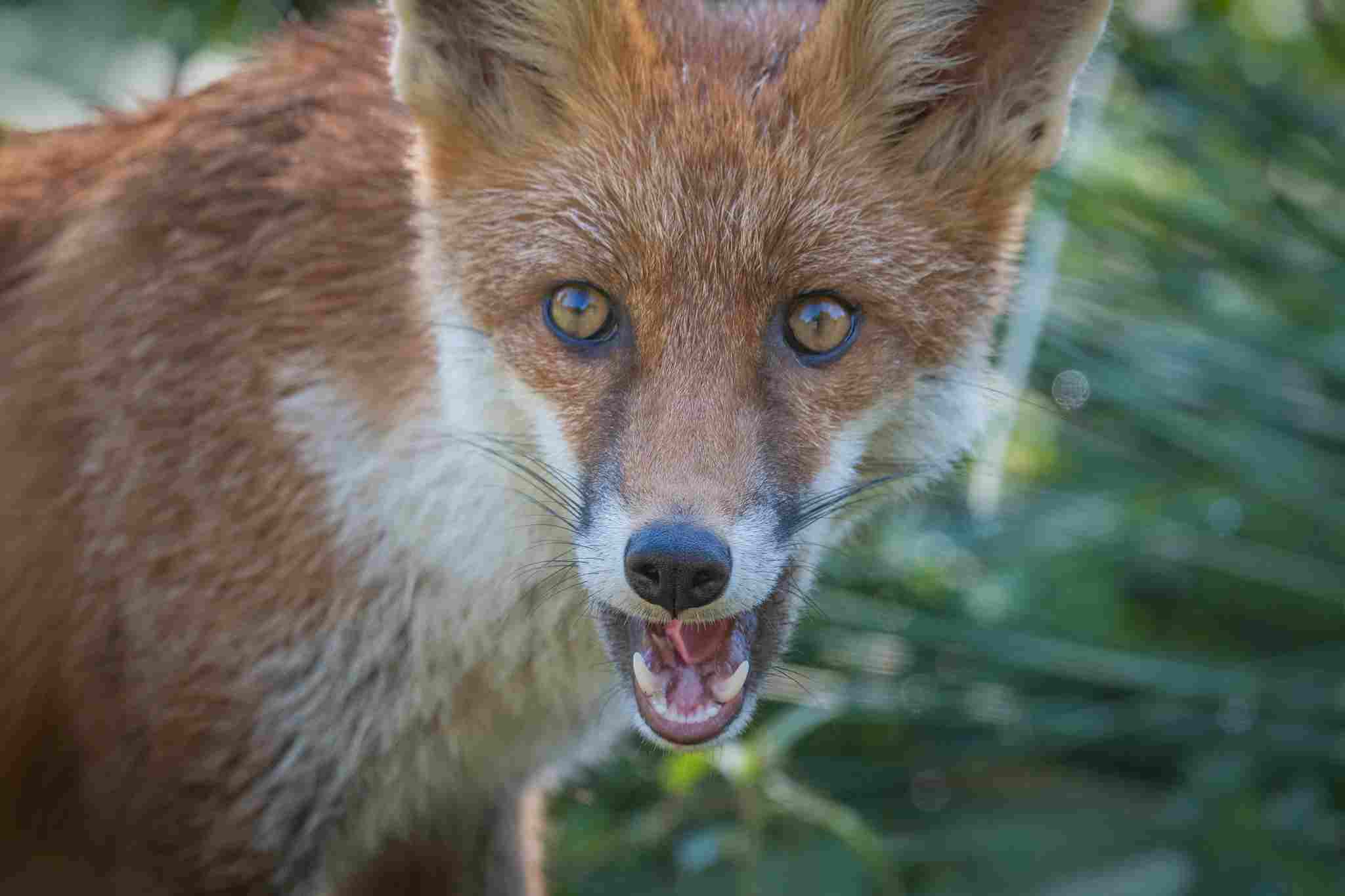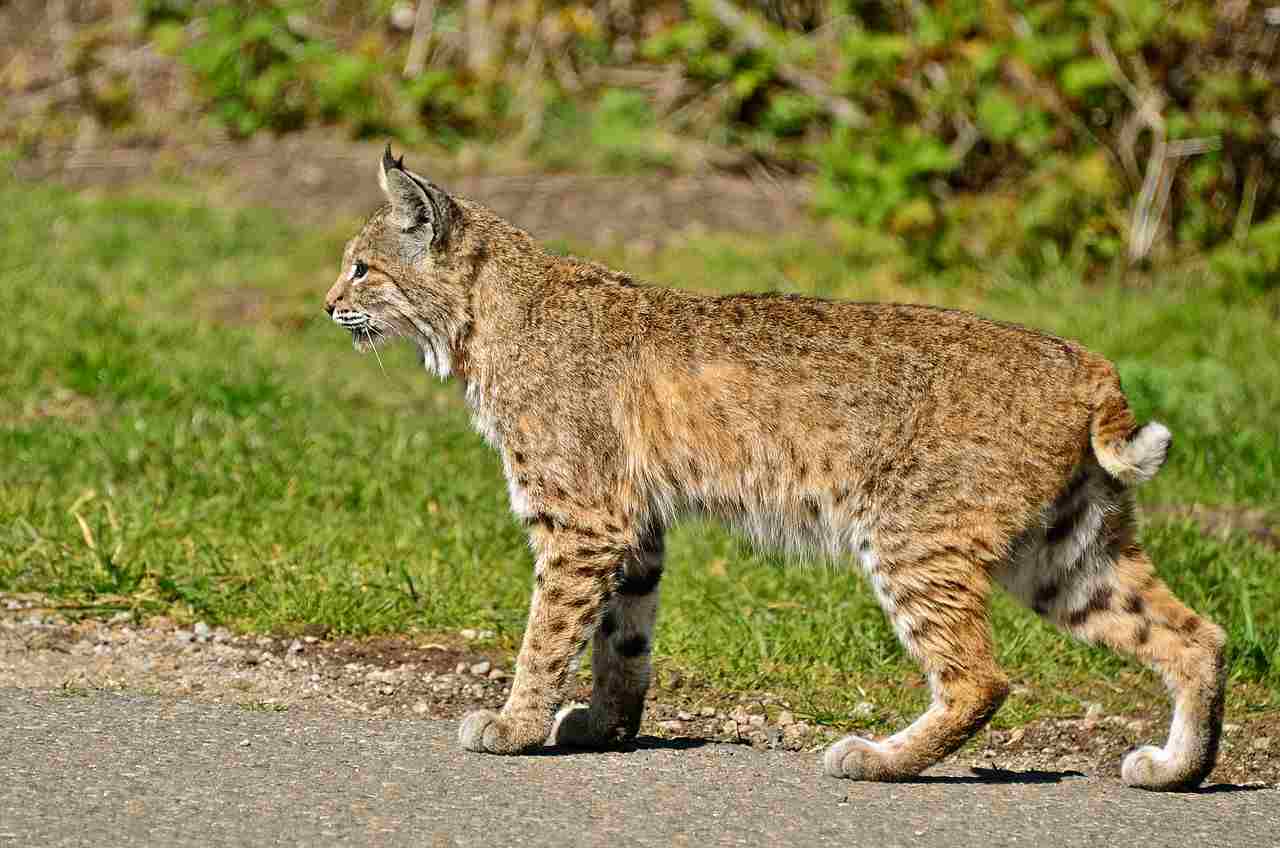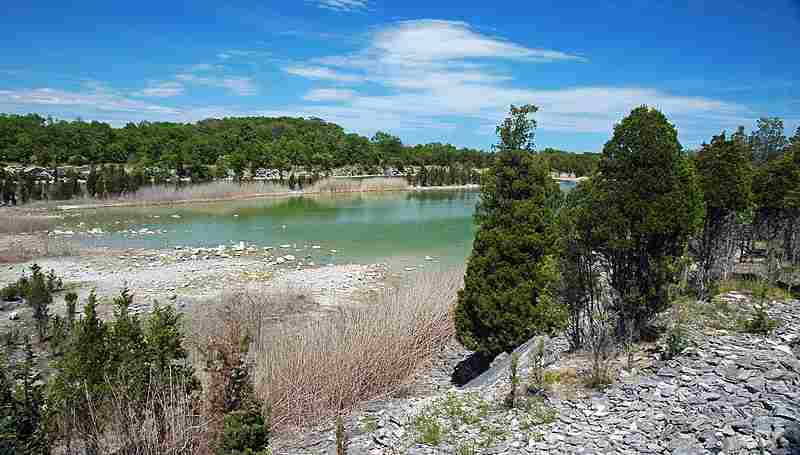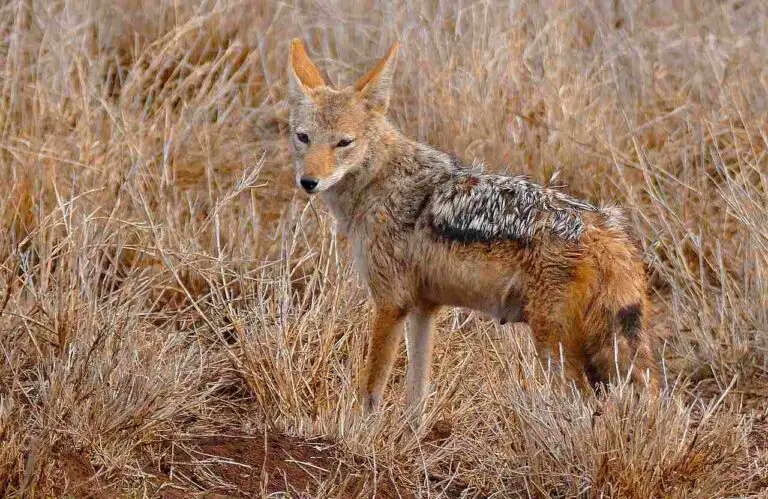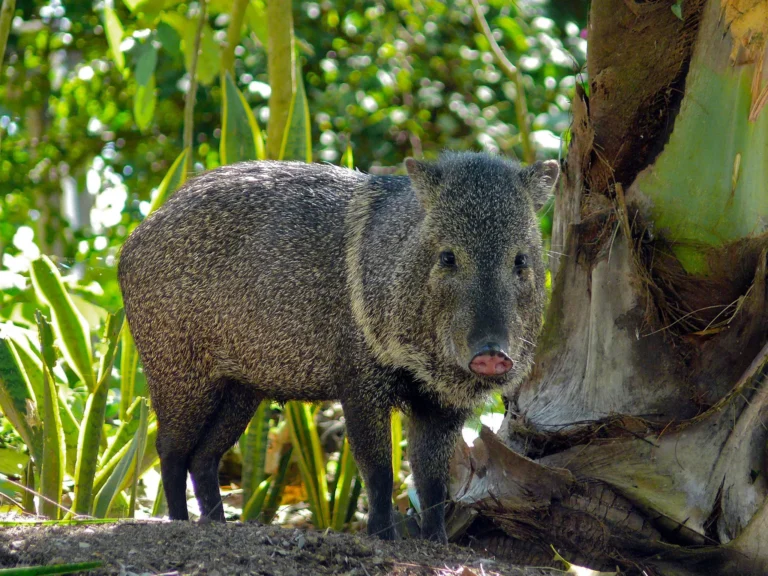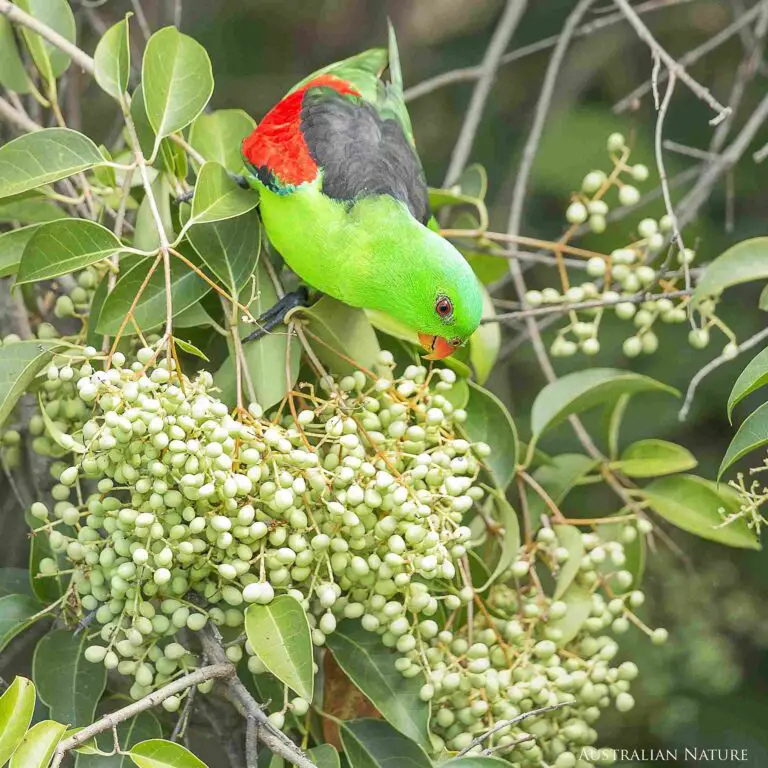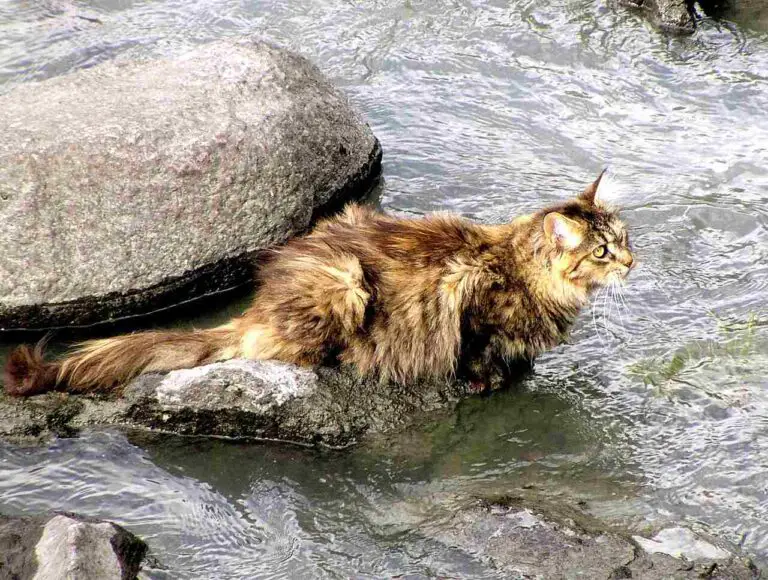9+ Carnivores in Ohio and Their Characteristics
Carnivores in Ohio are diverse and play vital roles in maintaining ecological balance. Among them are the bobcat, river otter, weasel, timber rattlesnake, copperhead snake, black widow spider, recluse spider, mountain lion, hawk, and eagle. These species inhabit various habitats across the state, from forests and wetlands to urban areas, and contribute to controlling prey populations and ensuring the health of ecosystems. Conservation efforts focus on preserving their habitats and raising awareness to promote coexistence with these important carnivores.
1. Bobcat
Ohio is home to a diverse array of wildlife, and among its carnivorous inhabitants, the bobcat stands out as an elusive and formidable predator. These medium-sized wild cats, recognizable by their tufted ears, spotted fur, and short, bobbed tail, are native to North America, including parts of Ohio. Bobcats are highly adaptable animals, inhabiting a variety of ecosystems ranging from forests and swamps to deserts and even suburban areas.
In Ohio, bobcats primarily inhabit forested regions, where they prey upon small mammals such as rabbits, squirrels, and mice. They are also known to hunt birds, reptiles, and occasionally larger prey like deer. Bobcats are solitary creatures, typically only coming together during the mating season, which occurs in late winter to early spring.
Despite their solitary nature, bobcats are skilled hunters, relying on their keen senses of sight and hearing to stalk and ambush their prey. They are adept climbers and swimmers, allowing them to navigate diverse landscapes in search of food. While encounters with humans are rare due to their elusive behavior, bobcats play a vital role in maintaining ecological balance by controlling rodent populations and contributing to the overall health of the ecosystem.
Conservation efforts in Ohio aim to protect and preserve bobcat populations, recognizing their importance in the state’s natural heritage. Through habitat conservation, research, and public education, efforts are underway to ensure the continued presence of these magnificent carnivores in Ohio’s wilderness.
2. River Otter
River otters are charismatic and playful carnivores that inhabit various waterways across Ohio, including rivers, streams, and wetlands. Once extirpated from the state due to habitat loss and overhunting, river otters have made a remarkable comeback thanks to successful conservation efforts. Reintroduction programs and habitat restoration projects have helped bolster populations, allowing these semi-aquatic mammals to thrive once again.
In Ohio, river otters primarily feed on fish, amphibians, crustaceans, and small mammals found in and around water sources. They are well-adapted for aquatic life, with webbed feet, streamlined bodies, and dense fur that provides insulation against the cold water. River otters are highly social animals, often seen playing and engaging in group activities both in and out of the water.
Conservation initiatives continue to focus on preserving the riparian habitats essential for river otter survival in Ohio. Protecting water quality, maintaining natural water flow, and minimizing human disturbances are crucial strategies for ensuring the long-term viability of river otter populations in the state.
3. Weasel
Weasels are small but fierce carnivores found throughout Ohio, inhabiting a variety of environments ranging from forests and fields to marshes and suburban areas. These agile predators belong to the Mustelidae family, which also includes species like minks and martens.
In Ohio, the most common species of weasel is the short-tailed weasel, also known as the ermine in its white winter coat phase. Weasels have long, slender bodies, short legs, and sharp claws, making them well-suited for hunting small prey such as mice, voles, and rabbits. Despite their diminutive size, weasels are voracious predators, capable of taking down prey much larger than themselves.
Weasels are primarily solitary animals, with individuals establishing territories that they defend against intruders. They are active hunters, relying on their keen sense of smell and agility to track down and capture prey. Weasels play a vital role in controlling rodent populations, which helps maintain ecological balance in their respective habitats.
While widespread and adaptable, weasels face threats such as habitat loss, fragmentation, and human persecution. Conservation efforts aim to protect natural habitats and minimize human disturbances to ensure the continued presence of these important carnivores in Ohio’s ecosystems.
4. Timber Rattlesnake
The timber rattlesnake is a venomous carnivore native to Ohio, inhabiting forested areas with rocky outcrops, ledges, and brushy cover. Recognized by its distinctive rattling sound and triangular-shaped head, the timber rattlesnake plays a crucial role in controlling rodent populations and maintaining ecosystem balance.
In Ohio, timber rattlesnakes primarily feed on small mammals such as mice, squirrels, and rabbits, which they ambush and inject with venom using their hollow fangs. Despite their fearsome reputation, timber rattlesnakes are generally shy and elusive, preferring to avoid confrontation with humans.
Conservation efforts in Ohio aim to protect timber rattlesnake populations and their habitats while promoting coexistence with human communities. Public education, habitat conservation, and responsible land management practices are essential components of these efforts, ensuring that these fascinating carnivores continue to thrive in the wilds of Ohio.
5. Copperhead Snake
The copperhead snake is a venomous reptile found in Ohio, primarily inhabiting forested areas, rocky hillsides, and brushy habitats. Recognizable by its distinctive copper-colored head and hourglass-shaped markings along its body, the copperhead is one of Ohio’s most commonly encountered venomous snakes.
In Ohio, copperheads primarily feed on small rodents, amphibians, and insects, using their heat-sensing pits to detect prey in low-light conditions. Despite their venomous bite, copperheads are generally non-aggressive and will typically only strike when threatened or provoked. They play an important role in controlling rodent populations and are considered valuable members of Ohio’s ecosystems.
Conservation efforts focus on habitat preservation and public education to promote coexistence with copperhead snakes. By understanding their behavior and habitat preferences, people can minimize conflicts with these reptiles while appreciating their ecological significance.
6. Black Widow
The black widow spider is a venomous arachnid found in Ohio, typically inhabiting dark, secluded areas such as woodpiles, sheds, and rocky crevices. Recognizable by its shiny black body and distinctive red hourglass marking on its abdomen, the black widow is one of the most venomous spiders in North America.
In Ohio, black widows primarily feed on insects and other small arthropods, using their powerful venom to immobilize prey. Despite their fearsome reputation, black widows are generally non-aggressive and will only bite in self-defense. Their venom is potent and can cause severe reactions in humans, making encounters with black widows a cause for caution.
Conservation efforts in Ohio focus on public education and awareness to reduce human conflicts with black widow spiders. By understanding their behavior and habitat preferences, people can take proactive measures to minimize encounters while appreciating the important role these spiders play in controlling insect populations.
7. Recluse Spider
The recluse spider, specifically the brown recluse, is a venomous arachnid found in Ohio, typically inhabiting dark, undisturbed areas such as basements, attics, and closets. Recognizable by its light brown color and distinctive violin-shaped marking on its cephalothorax, the recluse spider is known for its reclusive behavior and potent venom.
In Ohio, recluse spiders primarily feed on small insects and other arthropods, using their venom to subdue prey. While recluse spiders are venomous, they are generally non-aggressive and will typically only bite when threatened or accidentally disturbed. Their bites can cause necrotic lesions in humans, making encounters with recluse spiders a cause for caution.
Conservation efforts in Ohio focus on public education and awareness to reduce human conflicts with recluse spiders. By understanding their behavior and habitat preferences, people can take proactive measures to minimize encounters while appreciating the important role these spiders play in controlling insect populations.
8. Mountain Lion
The mountain lion, also known as the cougar or puma, is a large carnivorous cat that once roamed across much of North America, including parts of Ohio. However, sightings of mountain lions in Ohio are rare and often disputed, as the species is considered extirpated from the state due to habitat loss and overhunting.
Historically, mountain lions inhabited various habitats in Ohio, including forests, swamps, and grasslands. They are apex predators, preying on deer, small mammals, and occasionally livestock. Despite their elusive nature, mountain lions play a crucial role in ecosystem dynamics by controlling prey populations and maintaining biodiversity.
While there have been occasional reports of mountain lion sightings in Ohio, most are likely cases of mistaken identity or individuals released or escaped from captivity. Conservation efforts focus on preserving suitable habitat and raising awareness about the ecological importance of large predators like the mountain lion.
9. Hawk
Hawks are birds of prey belonging to the family Accipitridae, with several species found in Ohio, including red-tailed hawks, Cooper’s hawks, and broad-winged hawks. These majestic birds are known for their keen eyesight, powerful talons, and soaring flight.
In Ohio, hawks inhabit a variety of habitats, including forests, grasslands, and urban areas. They are skilled hunters, preying on small mammals, birds, reptiles, and insects. Hawks play a vital role in controlling rodent populations and maintaining the balance of ecosystems.
Conservation efforts in Ohio focus on protecting habitat and minimizing human disturbances that may impact hawk populations. By conserving natural areas and promoting responsible land management practices, efforts are underway to ensure the continued presence of these magnificent birds in Ohio’s skies.
10. Eagle
Eagles are large birds of prey belonging to the family Accipitridae, with the bald eagle and the golden eagle being the two species found in Ohio. These iconic birds are known for their impressive size, sharp beaks, and keen eyesight.
In Ohio, bald eagles primarily inhabit riparian areas near lakes, rivers, and reservoirs, where they feed on fish and waterfowl. Golden eagles, while less common, are found in upland habitats and prey on small mammals and birds.
Conservation efforts have been instrumental in the recovery of eagle populations in Ohio, particularly the bald eagle, which was once endangered due to habitat loss and pesticide exposure. Through habitat restoration, nest protection, and public education, efforts are underway to ensure the continued success of these magnificent birds in Ohio’s ecosystems.
*Summary
-
Bobcat:
-
Medium-sized wild cat native to North America.
-
Habitat: forests, swamps, deserts, and suburban areas.
-
Solitary hunters preying on small mammals, birds, and occasionally deer.
-
Conservation efforts focus on habitat preservation and public education.
-
-
River Otter:
-
Semi-aquatic mammals inhabiting rivers, streams, and wetlands.
-
Once extirpated but successfully reintroduced.
-
Playful and social animals feeding on fish, amphibians, and crustaceans.
-
Conservation efforts include habitat restoration and water quality protection.
-
-
Weasel:
-
Small carnivores found in various habitats including forests and fields.
-
Voracious predators of rodents like mice, voles, and rabbits.
-
Solitary hunters with keen senses and agile movements.
-
Conservation efforts aim at habitat preservation and minimizing human disturbances.
-
-
Timber Rattlesnake:
-
Venomous snake inhabiting forested areas with rocky outcrops.
-
Feeds on small mammals like mice and squirrels.
-
Generally shy but important for controlling rodent populations.
-
Conservation efforts focus on habitat preservation and public education.
-
-
Copperhead Snake:
-
Venomous snake found in forests, hillsides, and brushy habitats.
-
Feeds on small rodents and amphibians.
-
Non-aggressive but caution is advised due to venomous bite.
-
Conservation efforts emphasize habitat preservation and public education.
-
-
Black Widow Spider:
-
Venomous arachnid found in dark, secluded areas.
-
Feeds on insects and arthropods.
-
Non-aggressive but venomous bite poses risk to humans.
-
Conservation efforts focus on public education and awareness.
-
-
Recluse Spider:
-
Venomous arachnid found in dark, undisturbed areas.
-
Feeds on insects and arthropods.
-
Non-aggressive but venomous bite can cause necrotic lesions.
-
Conservation efforts emphasize public education and awareness.
-
-
Mountain Lion:
-
Once inhabited Ohio but considered extirpated due to habitat loss and hunting.
-
Apex predators preying on deer and small mammals.
-
Conservation efforts focus on habitat preservation and raising awareness.
-
-
Hawk:
-
Birds of prey found in various habitats including forests and urban areas.
-
Skilled hunters preying on small mammals, birds, and insects.
-
Vital for controlling rodent populations and maintaining ecosystem balance.
-
Conservation efforts emphasize habitat protection and minimizing disturbances.
-
-
Eagle:
-
Large birds of prey including bald and golden eagles.
-
Habitat includes riparian areas and uplands.
-
Feed on fish, waterfowl, and small mammals.
-
Conservation efforts focus on habitat restoration, nest protection, and public education.
-
| Carnivores | Summary |
| Bobcat |
Medium-sized wild cat native to North America. Solitary hunters preying on small mammals, birds, and occasionally deer. Conservation efforts focus on habitat preservation and public education.
|
| River Otter |
Semi-aquatic mammals inhabiting rivers, streams, and wetlands. Playful and social animals feeding on fish, amphibians, and crustaceans. Conservation efforts include habitat restoration and water quality protection.
|
| Weasel |
Small carnivores found in various habitats including forests and fields. Voracious predators of rodents like mice, voles, and rabbits. Conservation efforts aim at habitat preservation and minimizing human disturbances.
|
| Timber Rattlesnake |
Venomous snake inhabiting forested areas with rocky outcrops. Generally shy but important for controlling rodent populations. Conservation efforts focus on habitat preservation and public education.
|
| Copperhead Snake |
Venomous snake found in forests, hillsides, and brushy habitats. Non-aggressive but caution is advised due to venomous bite. Conservation efforts emphasize habitat preservation and public education.
|
| Black Widow Spider |
Venomous arachnid found in dark, secluded areas. Non-aggressive but venomous bite poses risk to humans. Conservation efforts focus on public education and awareness.
|
| Recluse Spider |
Venomous arachnid found in dark, undisturbed areas. Non-aggressive but venomous bite can cause necrotic lesions. Conservation efforts emphasize public education and awareness.
|
| Mountain Lion |
Once inhabited Ohio but considered extirpated due to habitat loss and hunting. Apex predators preying on deer and small mammals. Conservation efforts focus on habitat preservation and raising awareness.
|
| Hawk |
Birds of prey found in various habitats including forests and urban areas. Skilled hunters vital for controlling rodent populations. Conservation efforts emphasize habitat protection and minimizing disturbances.
|
| Eagle |
Large birds of prey including bald and golden eagles. Feed on fish, waterfowl, and small mammals. Conservation efforts focus on habitat restoration, nest protection, and public education.
|
Related FAQs
Q: Are bobcats dangerous to humans? A: Bobcats are generally shy and elusive animals that prefer to avoid humans. They typically do not pose a threat to humans unless cornered or provoked. However, like any wild animal, it’s important to give them space and avoid approaching or attempting to feed them.
Q: What should I do if I encounter a river otter in the wild? A: If you encounter a river otter in the wild, it’s best to observe from a distance and avoid disturbing the animal. River otters are typically not aggressive towards humans but may defend themselves if they feel threatened. Keep pets leashed and do not attempt to feed or approach the otter.
Q: Are weasels harmful to humans? A: Weasels are small carnivores that primarily prey on rodents and other small animals. They are not harmful to humans and generally avoid confrontation. However, they may bite if cornered or handled, so it’s best to admire them from a distance in their natural habitat.
Q: What should I do if I encounter a venomous snake like a copperhead or timber rattlesnake? A: If you encounter a venomous snake, such as a copperhead or timber rattlesnake, it’s important to give the snake plenty of space and avoid provoking it. Back away slowly and allow the snake to retreat. Do not attempt to handle or approach the snake, as venomous snake bites can be dangerous and require medical attention.
Q: How can I protect myself from black widow and recluse spiders? A: To protect yourself from black widow and recluse spiders, it’s important to take precautions when working in areas where these spiders may be present, such as dark, secluded spaces. Wear gloves and long sleeves when handling objects in these areas, and shake out clothing and shoes before putting them on. Keep indoor spaces clean and clutter-free to reduce hiding spots for spiders.
Q: What should I do if I encounter a mountain lion in the wild? A: If you encounter a mountain lion in the wild, it’s important to remain calm and avoid running or turning your back on the animal. Back away slowly while facing the mountain lion and making yourself appear larger by raising your arms or opening your jacket. Do not approach the mountain lion or attempt to feed it. If the mountain lion behaves aggressively, make loud noises, throw objects, and fight back if attacked.
Q: How can I help conserve hawk and eagle populations in Ohio? A: To help conserve hawk and eagle populations in Ohio, you can support habitat preservation efforts by volunteering with local conservation organizations, participating in citizen science projects, and advocating for policies that protect natural habitats. Additionally, practicing responsible land management practices and minimizing disturbances in areas where these birds nest and forage can help ensure their continued success.
